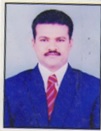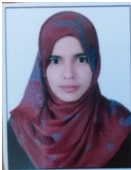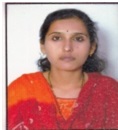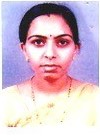Humanities and Sciences Department exists right from the inception of the college 1997. The department is
mainly devoted for the all round development of I B.Tech. students. The Department is having dedicated and
experienced faculty.
H&S Department comprises of four units like English, Chemistry, Physics and Mathematics. The staff has
significantly contributed in research areas such as Charge transfer complexes, Fiber optics, Polymers,
Nanotechnology, material science, etc.
Among the twenty nine faculty members of the department, there are two doctorates and four are pursuing
their research work. The Department provides an outstanding research environment with the aid of qualified
faculty. They are regularly engaged in attending & organizing several National, International conferences,
workshops and courses on various subjects.





















The student is expected to learn the concept of error and its
analysis. It also allows the student to develop experimental skills to design new experiments in engineering.
With the exposure to these experiments the students can compare the theory and correlate with
experiment.
Finally, engineering physics course generates fundamental knowledge needed for the future technological
advances and improves our quality of life by providing the basic understanding necessary for developing new
instrumentation and techniques for various applications.
It also helps the student to develop problem solving skills and analytical skills.
Different experiments in the curricula were performed in the laboratory that will give complete understanding
of various chemical processes which the budding engineers will encounter working as professional. It is hoped
that they will be able to tackle the process operation and control in an efficient manner.
Knowledge of this lab could be used by the students in their future endeavour while working in various
industries/institutions
The Computer Assisted Language Learning (CALL) lab has the capacity of 32 workstations apart from one
Instructor workstation. This software based language lab aims to familiarize the learners to the nuances of
English speech like sounds, word accent, sentence accent, rhythm and intonation and to neutralize the
influence of the regional accent and to bring about a consistent accent and intelligibility in their
English.
The Interactive Communication Skills (ICS) lab is located in a spacious room with good acoustics, well
equipped with the latest technological aids viz., T.V. with large screen, VCD,LCD,OHP etc., that facilitates
the students to develop their soft skills, presentation skills and to build up their confidence, enhance their
performance in Placement Interviews, Group Discussions and other recruitments.
| Title with page nos. | Journal | ISSN / ISBN No. | Whether peer reviewed Impact Factor, if any | Main aurhor |
| “The Propagation of Light in Photonic Crystal” 244-245 | Indian journal of research- Paripex | 2250-1991 | yes 0.3208 | Dr.Brijesh |
| Soliton and its underlying principle 1-3 | International index Indian journal of applied research | 2250-1991 | yes 0.8215 | Dr.Brijesh |
| 1-D Photonic crystal and its band gap significance 160-161 | paripex – indian journal of research (pijr) | 2250-1991 | yes 1.6714 | Dr.Brijesh |
| Significant sensing performance of photonic crystals 345-346 | International Journal of Scientific Research (IJSR) | 2277-8179 | Yes 1.8651 | Dr.Brijesh |
| Effect of modulation instability on bright solitons propagating in spatially nonlinear media 443-444 | International Journal of Scientific Research (IJSR) | 2277-8179 | Yes 1.8651 | Dr.Brijesh |
| Modification of classical evolutionary equations of soliton 519-520 | International index Indian journal of applied research | 2249-555X | Yes 2.1652 | Dr.Brijesh |
| Self phase modulation,cross-phase modulation and four wave mixing of the non linear effects in optical fiber. 140-141 | International Journal of Scientific Research (IJSR) | 2277-8179 | Yes 1.8651 | Dr.Brijesh |
| Visualization of Photonic Crystal by its Photonic Band Structure” 152-153 | paripex – indian journal of research (pijr) | 2250-1991 | Yes 1.6714 | Dr.Brijesh |
| Principle and development of evolutionary equations of soliton propagating in nonlinear media 143-144 | Global Journal For Research Analysis (GJRA) | 2277-8160 | Yes 1.5408 | Dr.Brijesh |
| principle of soliton and effect of modulation instability on solitons propagating in nonlinear media 316-317 | International Journal of Scientific Research (IJSR) | 2277-8179 | Yes 1.8651 | Dr.Brijesh |
| solitons acts as information carrying bits 708-709 | Indian Journal of Applied Research (IJAR) | 2249-555x | Yes 2.1652 | Dr.Brijesh |
| Effect of transmission spectra of the dielectric photonic crystals 197-198 | paripex – indian journal of research (pijr) | ISSN – 2250-1991 | Yes 1.6714 | Dr.Brijesh |
| ““Effects of transmission spectra of the metallic photonic crystal (MPC)” 191-192 | Global Journal For Research Analysis (GJRA) | 2277-8160 | Yes 1.5408 | Dr.Brijesh |
| “The defect states in the photonic crystal introduce additional modes in the photonic band gap” 191-192 | Global Journal For Research Analysis (GJRA) | 2277-8160 | Yes 1.5408 | Dr.Brijesh |
| Shapes of Rods Affect the Eigenmode in Photonic Crystal Fiber 195-196 | paripex – indian journal of research (pijr) | ISSN – 2250-1991 | Yes 1.6714 | Dr.Brijesh |
| Effect of Nonlinear Four Wave (Fwm) Mixing in Fiber 71-72 Dr.B71-rijesh. | Indian Journal of Applied Research (IJAR) | ISSN – 2249-555X | Yes 2.1652 | Dr.Brijesh |
| The Nonlinear Effects in an Optical Fiber 71-72 | Indian Journal of Applied Research (IJAR) | ISSN – 2249-555X | Yes 2.1652 | Dr.Brijesh |
| “Salient aspects of soliton physics | Indian Journal of Applied Research (IJAR) | ISSN – 2249-555X | 3.6241 | Dr.Brijesh |
| Establishment of soliton concept | Indian Journal of Applied Research (IJAR) | ISSN – 2249-555X | 3.6241 | Dr.Brijesh |
| Basic optical fiber communication system | International Journal of Scientific Research (IJSR) | ISSN No 2277 – 8179 | 3.2416. | Dr.Brijesh |
| Dispersion and losses in fibers | Global Journal For Research Analysis (GJRA) | ISSN No 2277 – 8160 | 3.1218. | Dr.Brijesh |
| Soliton based optical fiber communication | International Journal of Scientific Research (IJSR) | ISSN No 2277 – 8179 | 3.2416. | Dr.Brijesh |
| Role of diodes and amplifiers in the optic fiber communication systems | Global Journal For Research Analysis (GJRA) | ISSN No 2277 – 8160 | 3.1218. | Dr.Brijesh |
| “The origin of fiber optic systems” | paripex – indian journal of research (pijr) | ISSN – 2250-1991 | 3.4163 | Dr.Brijesh |
| “Historical development of optical communication systems” | paripex – indian journal of research (pijr) | ISSN – 2250-1991 | 3.4163 | Dr.Brijesh |
| Theoretical Study of Results of Fiber Bragg Grating Solitons | Indian Journal of Applied Research (IJAR) | Volume : 6 | Issue : 1 | JANUARY 2016 | ISSN – 2249-555X | 3.6241 | Dr.Brijesh |
| The Propagation of Light in Photonic Crystal by Visualization of Photonic Band Structure | Indian Journal of Applied Research (IJAR) | Volume : 6 | Issue : 1 | JANUARY 2016 | ISSN – 2249-555X | 3.6241 | Dr.Brijesh |
| Solitons Propagating in Nonlinear Media | International Journal of Scientific Research (IJSR) | | JANUARY 2016 • Volume : VI, Issue : I, January – 2016 ISSN No 2277 – 8179ARY 016 • ISSN ISSN No 2277 – 8160 No 2277 – 8179 | 3.2416 | Dr.Brijesh |
| Experimental Study of Results of Fiber Bragg Grating Solitons | International Journal of Scientific Research (IJSR) | Volume : VI, Issue : I, January – 2016 me : 5 | Issue : 1 | ISSN No 2277 – 8160 JANUARY 2016 • ISSN No 2277 – 8179 | 3.2416 | Dr.Brijesh |
| Photonic Bands Predict The Behavior of Light Accurately | Indian Journal of Applied Research (IJAR) | Volume : 6 | Issue : 1 | JANUARY 2016 | ISSN – 2249-555X | 3.6241 | Dr.Brijesh |
| Paper entitled “UNDERLYING PRINCIPLE OF SOLITON” Organized by Malla Reddy Institute of Engineering and Technology | The International Conference on Emerging Trends in Engineering, Technology and Science ICETETS | 2345-9808 | – | Dr.Brijesh |
| COs | |
| 1 | The students should be able to relate and explain the importance of elastic behavior of materials and stress-strain diagram. |
| 2 | The students should be able to discuss and apply Sabine’s formula for reverberation time and apply in architecture of buildings. |
| 3 | The students should be able to learn Learn various methods of producing ultrasonics their uses and its application to NDT testing. |
| 4 | The students should be able to learn and distinguish/differentiate properties of magnetic, dielectric and superconducting materials and their applications in various fields. Also, the student must be able to understand the conceots of quantum nechanics. |
| 5 | The students should be able to learn and understand the behaviour of electric atomic dipoles and domains in the magnetic materials. |
| 6 | The students should be able to learn the nature of centro and non centro symmetrical substances. |
| 7 | The students should be able to recognize the factors affecting the architectural acoustics and their remedy |
| COs | |
| 1 | student is able to analyse the importance of behaviour of a particle quantum mechanically |
| 2 | Student explain charge carriers in semiconductors |
| 3 | Students will be able to recognize the importance of dielectric materials in verious fields. |
| 4 | Students will discuss and distinguish various magnetic materials and can explain their properties. |
| 5 | Students will discuss and explain the properties of superconductors. |
| 6 | Students will identify the importance of nanomaterials and can discuss their properties |
| COs | |
| 1 | The student will able to understand the importance of an ecosystem. |
| 2 | The student will able to understand different natural resources and their exploitation. |
| 3 | The student will able to distinguish the renewable, non renewable resources utilisation and act accordingly. |
| 4 | Will understand the critical condition of valuable biodiversity and its conservation. |
| 5 | Will understand the critical condition of valuable biodiversity and organise awareness programmes. |
| 6 | Will develop ecofriendly technologies for sustainable development. |
| COs | |
| 1 |
The students should be able to describe types of random variables. |
| 2 |
The students should be able to apply distributions such as Binomial, Geometric and normal distributions. |
| 3 |
The students should be able to use of sampling distribution of means if standard deviation is known and unknown. |
| 4 |
The students should be able to discuss the distributions such as t distribution, f distribution. |
| 5 |
The students should be able to understand types of hypothesis, types of errors and assess the hypothesis . |
| 6 | The students should be able to Interpret the data using ANOVA for one-way. |
| 7 |
The students should be able to Operate different methods to find the solution of different types of equation. |
| 8 | The students should be able to Construct linear, non linear and curve linear equations. |
| 9 | The students should be able to understand and evaluate the numerical integration using different methods. |
| 10 | The students should be able to analyze approximate solution of IVP and compute using different methods. |
| 1 | To learn and analyse hardness and their removal methods and sewage treatment of water |
| 2 | Students can able to discuss Softening of water & its usage in Domestic and Industrial Purposes |
| 3 | Students can able to examine Electrode potential of metals using electrodes and predicting Spontaneity of reaction corrosion tendency and its control based on potential |
| 4 | Students can able to know the construction and function of batteries and their uses in various fields |
| 5 | Students can able to describe and compare various types of polymerization and preparation methods of various types of plastics |
| 6 | Students can able to discuss the hardening of rubber for various purpose by Vulcanization, |
| 7 | Discuss conduction in polymers by doping |
| 7 | Students can able to describe Mining of various fuels like coal & petroleum and refining and analysis |
| 8 | Students can able to practice the determination calorific value of fuel |
| 9 | They get Knowledge in apply of various types of lubricants and mechanism of lubrication in machinery to reduce friction |
| 10 | Students can able to Explain the Composition and methods of Setting and Hardening |
| COs | |
| 1 | Use English Language effectively in spoken and written forms. |
| 2 | Comprehend the given texts and respond appropriately. |
| 3 | Communicate confidently in formal and informal contexts. |
| 4 | Identifying the topic sentence. |
| 5 | Improve the language proficiency. |
| 6 | Develop study skills. |
| 7 | Structure of Reports. |
| 8 | Speaking with skills with clarity and confidence. |
| 9 | Neutralization of accent for intelligibility. |
| 10 | Learn employability skills. |
| 1 | Laplace Transform is a powerful technique to engineers and scientists as it enables the to solve linear differential equations with given initial conditions,(b)The concept of LT are applied in the area of scince and technology such as analysis communication engineering,linear system analysis,statistics,optics,quantum physics etc |
| 2 | The concept of LT are applied in the area of scince and technology such as analysis communication engineering,linear system analysis,statistics,optics,quantum physics etc |
| 3 | Gamma and Beta functions are used in Gamma distribution which is used to determine time based occurences such as life span of an electronic component. |
| 4 | Vector differentiation is used to find solenoidal and irrotational vectors,to find centre of mass and in Maxwell’s equations |
| 5 | Vector differentiation is used in Kinematics and Field theory |
| 6 | Vector integaration is used in evaluation of line integrals,Surface interals and volume integrals |
| 7 | We can transform one integral to another |
| COs | |
| 1 | The students will understand the various Forms of Business |
| 2 | The students will understand the impact of economic variables on the Business |
| 3 | The students will understand the aspects of the Demand |
| 4 | The students will understand the aspects of the Supply |
| 5 | The students will understand the aspects of Production & Cost |
| 6 | The students will understand the aspects of Market Structure |
| 7 | The students will understand the aspects of Pricing |
| 8 | The Students can study the firm’s financial position by analysing the Financial Statements of a Company. |
| 9 | The students will understand the Significance of Economics, Micro and Macro Economic Concepts |
| 10 | Understanding thr Concepts and Importance of National Income, Inflation, Money Supply in Inflation, Business Cycle. |
| 11 | Understanding the defination of Elasticity& its types of Elasticity, Law of Demand, Measurement and Significance of Elasticity of Demand, Factors affecting Elasticity of Demand, Elasticity of Demand in decision making |
| 12 | The students come to know about Demand Forecasting, its Characteristics, Steps and Methods |
| 13 | The students know the determination of Supply, Function & Law . |
| COs | |
| 1 | The students will understand the various Forms of Business |
| 2 | The students will understand the impact of economic variables on the Business |
| 3 | The students will understand the aspects of the Demand |
| 4 | The students will understand the aspects of the Supply |
| 5 | The students will understand the aspects of Production & Cost |
| 6 | The students will understand the aspects of Market Structure |
| 7 | The students will understand the aspects of Pricing |
| 8 | The Students can study the firm’s financial position by analysing the Financial Statements of a Company. |
| 9 | The students will understand the Significance of Economics, Micro and Macro Economic Concepts |
| 10 | Understanding thr Concepts and Importance of National Income, Inflation, Money Supply in Inflation, Business Cycle. |
| 11 | Understanding the defination of Elasticity& its types of Elasticity, Law of Demand, Measurement and Significance of Elasticity of Demand, Factors affecting Elasticity of Demand, Elasticity of Demand in decision making |
| 12 | The students come to know about Demand Forecasting, its Characteristics, Steps and Methods |
| 13 | The students know the determination of Supply, Function & Law . |
| 1 | Students will able to discuss the Management and Organisation |
| 2 | students will understand the aspects of Market Structure |
| 3 | Students will able to discuss the Human Resources Management |
| 4 | Students will able to discuss> the Project Management (PERT/ CPM) |
| 5 | students will understand the aspects Strategic Management and Contemporary Strategic Issues |